AUCTORES
Globalize your Research
Review Article | DOI: https://doi.org/10.31579/2639-4162/114
Atomoc and molecular of Physics group, faculty of basic science, University of Mazandaran, Babolsar
*Corresponding Author: Hamid Abbasi, Atomoc and molecular of Physics group, faculty of basic science, University of Mazandaran, Babolsar.
Citation: Hamid Abbasi, (2023), Design and Measurement of Plasmonic Refractive Index Sensor Based on Resonance system with two Rings, two Cavities and two Plasmonic Waveguides, J. General Medicine and Clinical Practice. 6(7); DOI:10.31579/2639-4162/114
Copyright: : © 2023, Hamid Abbasi. This is an open-access article distributed under the terms of the Creative Commons Attribution License, which permits unrestricted use, distribution, and reproduction in any medium, provided the original author and source are credited.
Received: 11 August 2023 | Accepted: 27 October 2023 | Published: 02 November 2023
Keywords: : optics, plasmonics; plasmon surface polaritons; insulation metal; refractive index sensor
In this research, we will seek to design and numerically evaluate a refractive index nano-sensor based on the resonant system with a metal insulating metal waveguide (MIM) that forms a wide range of wavelengths. To design the proposed sensor structure, we use two cavities and two rings with different dimensions and two plasmonic waveguides. After designing the sensor structure, we examine the resonant wavelengths and refractive index of the resonators by the finite difference method of the time domain, because this method directly obtains the Maxwell equations by proper separation in the two time and space domains and Tells us how to design the dimensions and coordinates of the sensor structure to achieve the desired result. We also draw all the diagrams of this sensor using MATLAB software. At the beginning of the simulation, we send an electromagnetic wave to the sensor structure that we have designed, through which we analyze the field distributions and the spectral response of the structural parameters. When the field distribution in a structure is the same, the energy loss is reduced. To achieve the maximum field distribution in the structure, all dimensions must be optimal. Intensification of the surface plasmon at the boundary between a metal surface and the dielectric material (sensor structure and waveguides) will increase the electric field strength and correct the sensor performance. Nanoparticle surface plasmon resonance depends on five factors: size, shape, nanoparticle composition, particle distance, and refractive index of the nanoparticle environment. These five factors affect the wavelength and intensity of the peak. To measure sensor performance, we will calculate factors such as resolution, transmission efficiency, adjustable range of wavelengths, S sensitivity coefficient, figure of merit (FOM), Q quality factor, and quality and width factor at half the maximum (FWHM).This allows us to obtain a functional plasmonic sensor. By increasing the number of amplifiers, the FWHM of the resonant wavelength can be modulated, and reach a sensitivity of 2713 nm/RIU is realized in the near-infrared region. This sensor is suitable for use in fully integrated circuits as well as for the detection of chemical, biological and biological materials due to its high resolution accuracy, low size, high FOM value and high sensitivity coefficient.
Optical integrated circuits are one of the most important and practical tools in technology. To reduce obstacles and make more use of them, we need to shrink and compress plasmonic structures to achieve fully integrated high-efficiency optical devices. Plasmonic science has been described as the interaction of radiant electromagnetic waves to the surface of metals and their conducting electrons, and has the ability to enclose electromagnetic waves at dimensions much smaller than the radiant wavelength. Plasmonics are divided into superficial plasmon plasmons [1–3] and localized superficial plasmons [4,5]. The surface polariton plasmon (SPP) is a transverse electromagnetic wave that is confined to the interface between metallic and dielectric materials and is capable of propagating up to several micrometers [6-8]. The ability of superficial polariton plasmon to overcome the limitations of classical optical diffraction has made them attractive as carriers of energy and information in circuits and optical devices. Among the various SPP structures, insulated metal-metal structures (MIM) and insulated metal-insulated structures (IMI), two common types of plasmonic structures (such as filters [9], couplers [10], sensors [11-19], etc.) that can be used to guide, amplify and modify light fields at the nanoscale. Due to the support modes, high group speed, very high optical confinement and acceptable propagation length, we choose the metal insulation structure (MIM). Also, the most important plasmonic components are based on the structure of active and inactive devices. Active environments are anisotropic and can be changed by applying an external factor, their refractive index and wavelength, ie they are suitable for switches and sensors, and inactive environments are isotropic and have only one refractive index, ie for switches and The sensors are not suitable. To build quality plasmonic sensors, parameters such as high transmission efficiency, high quality factor, high resolution, optical stability, sensitivity enhancement and adjustability in a range of wavelengths must be considered. Improving these parameters strengthens and increases the speed of information processing in optically integrated circuits. In this research, a set of plasmonic waveguides and resonators (MIM) are used to design and build our desired sensor. By analyzing this set, we seek to achieve the desired parameters in plasmonic sensors and its improvement and development. In this study, instead of changing the refractive index of all structures, we change only the refractive index of one structure and the rest of the structures have a constant refractive index. The purpose of this work is to challenge the quality of the sensor and achieve the best type of sensor performance.
Each waveguide with any kind of geometric shape is capable of transmitting waves and can limit their energy in one and two dimensions. This transition is interpreted by the wave equation. The geometry of a waveguide indicates its function, and the frequency of the transmitted wave determines the size of a waveguide. We also know that Maxwell's equations describe the shape of electromagnetic cross waves, and the linear electricity equation describes the shape of sound waves. At longer wavelengths, wider wavelengths are guided, and at higher frequencies, narrower wavelengths will be guided. Above a frequency range, the optical properties of metals are explained by the plasma model, which is the result of Maxwell's equations, and electrons are damped by collisions with the frequency υ = 1 / τ [20]. For visible frequencies (microwave and far infrared), the spectrum of metals is very reflective and does not allow electromagnetic waves to propagate through them. At higher frequencies (near-infrared and visible from the spectrum) the field penetration and dissipation increase. Then, at ultraviolet frequencies, the metals acquire dielectric properties and allow the propagation of electromagnetic waves with different degrees of attenuation. In the free electron model at high frequencies, the dielectric function tends to zero, and for noble metals, generalizing this model to a frequency range greater than the plasma frequency creates a polar environment. As a result, real metals are expressed by the greeting model:

ω is the angular frequency,
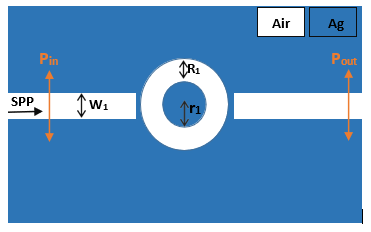
Figure 1: Two-dimensional image of a plasmonic sensor.
We consider the simulation bed as silver and the environment inside the cavaties and waveguides as air. Due to the importance of the width of the resonance modes and also to achieve more accurate results, we use the experimental refractive index of silver. Also, due to the smaller width of the waveguides than the wavelength of the radiated light, there is only the fundamental TM state in the sensor structure. According to Figure 1, the TM wave begins to move with a strong magnetic field from the left and propagates in the waveguide to reach the end of the path. Wave TM in motion the closer it gets to the output, the less intense it becomes. Each resonator reflects a portion of the input wave. The scattering relationship of this fundamental state is expressed as follows [21]:

Here ω refer to the width of bus waveguide, λ shows incident light
wavelength in vacuum, εi and εm give the relative dielectric and metal permittivity, βspp and neff are propagation constant and effective refractive index of SPPs, and =2π⁄λ k0 means wave number. Many MIM-designed plasmonic sensors use two-dimensional simulation to test the performance of devices.
3.Refractive index simulation and measurement methods
We examine the resonance behavior of the proposed sensor numerically and theoretically. For the numerical method, we use the time domain finite difference simulation (FDTD) method so that the input wave has less reflection. This method has a layer boundary condition (PML). The uniform mesh size for the x and y directions is 8 nm.We also use the transmission line model to analyze the theory of sensor structure. By changing the refractive index of the sensor, we obtain the change in wavelength in the range of 400 to 1500 nm and plot the transmission spectrum obtained from the sensor device to examine the modes obtained from the transmission. As shown in Figure.2, the sensor transmission spectra have three peaks. The peaks on the left have a Higher height and FWHM narrower, but the rate of change of the resonance wavelength in these two peaks is low, and the peak on the right has a greater change in wavelength.

Figure 2: Transmission spectra of plasmonic refractive index.

Figure 3: Resonance wavelength against refractive index
As a result, using Equation 7, we obtain the sensitivity of different wavelengths. According to Fig. 4, the maximum sensitivity for the refractive index is n = 1.13 (in mode3), which is equal to 1424 nm / RIU, and the lowest value is for the refractive index n = 1.08 (in mode1), which is equal to 330.2. Therefore, mode 3 is more sensitive than mode1 and mode 2.
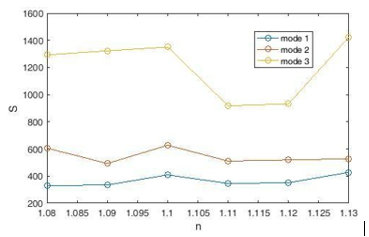
Figure 4: Plasmonic sensor sensitivity coefficient diagram
Since sensitivity alone is not a measure of good performance for comparing different types of sensors, and light resolution is very important for sensors, we need two more to measure the capabilities of a plasmonic sensor: Q quality factor and figure of merit (FOM). Higher sensitivity reduces the FOM at the desired point. Also, increasing the length of the resonators will improve performance and reduce FOM by lengthening the light path and wasting more energy. The figure of merit (FOM) is obtained from Equation (8):
Using Equation 8, we plot figure of merit (FOM) diagram. According to Fig.4, the maximum value for the figure of merit (FOM) is at refractive index n = 1.13 (in mode1), which is equal to 17.259 nm / RIU. We also conclude that mode 1 has higher figure of merit (FOM) and mode 3, which had a higher sensitivity factor, has smaller figure of merit (FOM).

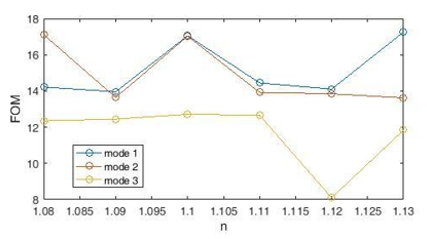
Figure 5: Plasmonic sensor figure of merit (FOM) diagram
The qualitycoefficient is also obtained from Equation 9 by dividing the wavelength by FWHM:
Q = λres / FWHM (9)
We see the quality coefficient diagram in Figure 6, the highest value of which is related to the refractive index n = 1.08 (in case 1), which is equal to 20.072 nm / RIU, and the lowest value is related to the refractive index n = 1.13 (in case 3). Which is equal to 10.416 nm / RIU.
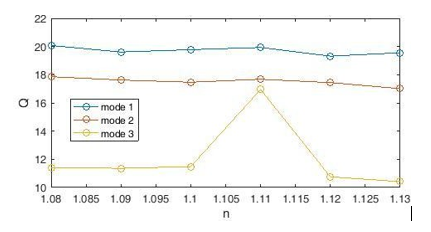
Figure 6: Qualityfactor diagram of Q plasmonicsensor
Now we add to the sensor structure a ring with inner radius r2 = 80 nm and outer radius R2 = 120 nm and a cavity with length L1 = 92 nm and height W2 = 200 nm (Fig.7). These ring and cavity that are stuck together at the bottomof the waveguide are on the right.
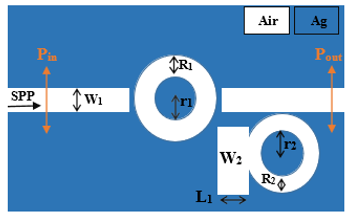
Figure 7: Two-dimensional image of a plasmonicsensor with two waveguides, two rings and a cavity
To measure the sensor performance and calculate the sensitivity coefficient, figure of merit (FOM) and Q quality in this new structure, we only change the refractive index of the middle ring and the refractive index of the waveguides and the cavity and the lower ring remain the same. This makes the sensor structure more challenging and we get more accurate results. Next, we calculate the change in the refractive index of the sensor in the wavelength range of 400 to 1500 nm and obtain the resulting transmission spectrum (Figure.8). Three peaks are obtained, with the two left peaks having a higher height and a narrower FWHM, but the right peak having a lower height and a wider FWHM. Also, the right peak in this figure has a wider FWHM and higher wavelength transmission than the right peak in Figure.2, which indicates that the structure of Figure 7 will have a higher sensitivity coefficient than the structure of Figure 1.

Figure 8: Plasmonic refractive index sensortransmission spectra with two waveguides, two rings and a cavity
Again, we plot the refractive index changes in the selected wavelength range for the new structure, and draw a graph for the relationship between the two resonant wavelength parameters and the refractive index (Fig.9). According to the figure, peak 3 has better conditions than the other two peaks, and the wavelength at this peak is higher than the other two peaks.

Figure 9: Resonance wavelength versus refractive index analysis index for plasmonic sensor with two waveguides, two ringsand a cavity.
We now need to obtain the sensitivity of the differentwavelengths using Equation7. According to Fig.10, the highest sensitivity is for the refractive index n = 1.09 (in mode3) which is equal to 2673 nm / RIU and the lowest value is for the refractive index n = 1.08 (in mode1) which is equal to 199 nm / RIU.
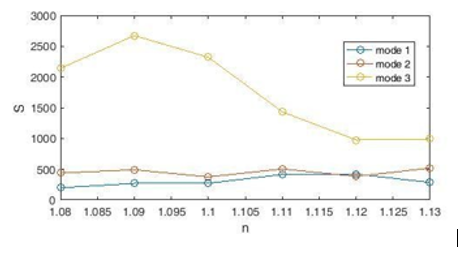
Figure 10: Plasmonic sensor sensitivity coefficient diagram with two waveguides, two rings and a cavity.
Using the sensitivity coefficient, we calculate the figure of merit (FOM) and then plot it (Figure.11). As shown in Figure 1, Peak 1 has less FOM and peaks 2 and 3 have more variations and are strongly dependent on the change in wavelength. As a result, the maximum value of figure of merit (FOM) for refractive index n = 1.09 (in mode3) is equal to 17.049 nm / RIU.

Figure 11: Plasmonic sensor figure of merit (FOM) diagram with two waveguides, two rings and a cavity.
The quality factor Q diagram of this sensor is obtained using Equation 9 (Figure.12). The highest value of Q quality coefficient is related to refractive index n = 1.08 (in mode2) which is equal to 18.887 nm / RIU and its minimum value for refractive index n = 1.08 (in mode3) is 7.74 nm / RIU.

Figure 12: Quality factor chart Q The proposedsensor with two waveguides, two ringd and one cavity.
Now we add a rock with length L2 = 92 nm and height W3 = 200 nm to the left of the structure (Fig. 13(. The distance between the two cavities is 278 nm and their distance from the waveguides is 42 nm. Naturally, the structure of the sensor faces a new challenge, so we re-evaluate the numerical factors of the sensor.

Figure 13: Two-dimensional image of a plasmonic sensor with two waveguides, two rings and two cavity.
Like the previous two simulations, this time we only change the refractive index of the middle ring in the range of 400 to 1500 nm to test the sensor and we keep the refractive index of waveguides and cavities and the lower ring constant. As a result, we obtain the resulting transmission spectrum (Fig. 14). According to the figure, peaks 1 and 2 have higher height and narrower FWHM, but peak 3 has lower height and wider FWHM. Also, the peak 3 in this figure has a wider FWHM and higher wavelength transmission than the peak 3 in Figures 2 and 8. This means that this structure has a higher sensitivity coefficient than the previous structure and the designed sensor will also perform better. Our goal in adding resonator step by step was to gauge their position so that we could select more appropriate dimensions for them.
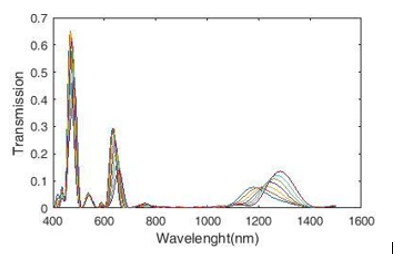
Figure 14: Plasmonic refractive index sensor transmission spectra with two waveguides, two rings and two cavities.
We now examine the graph of the rate of change of the refractive index in the selected wavelength range for the new structure to obtain a graph of the relationship between the resonant wavelength and the refractive index (Figure.15). According to the figure, peak 3 has more wavelength change than the other two peaks as well as the peaks of the previous two structures and as with the result in Fig.14, we again conclude that peak 3 has a highersensitivity.
Figure 15: Resonance wavelength against
The first criterion for measuring the performance of a sensor is its sensitivity. Therefore, we obtain the sensitivity of different wavelengths using Equation 7. According to Fig.16, the highest sensitivity is for the refractive index n = 1.09 (in mode3) which is equal to 2713 nm / RIU and the lowest value is for the refractive index n = 1.08 (in mode1) which is equal to 199.9 nm.

Figure 16: Plasmonic sensor sensitivity coefficient diagram with two waveguides, two rings and two cavities
We now calculate the FOM eligibility figure and plot it (Figure. 17(. The value of figure of merit (FOM) in refractive index n = 1.09, which has the highest sensitivity coefficient, reaches18.669. Like the sensitivity coefficient, the figure of merit (FOM) has also increasedcompared to the previous structure.
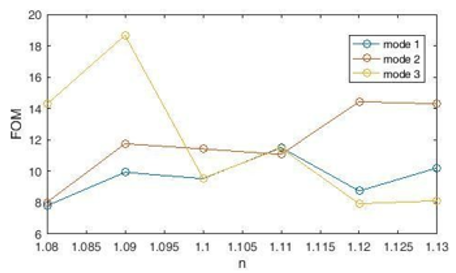
Figure 17: diagram of the FOM of a plasmonic sensor with two waveguides, two rings and two cavities.
The last criterion for measuring this sensor is the quality factor Q, the diagram of which is obtained using Equation 9 (Fig. 18(. The value of quality coefficient Q in the refractive index n = 1.09, which has the highest sensitivity coefficient, reaches 8. 458

Figure 18: Quality coefficient diagramof Q plasmonic sensor with two waveguides, two rings and two cavities
As shown in Table 1, the proposed method offers better results compared to some similar articles. According to this table, the maximum value of S sensitivity coefficient among these papers belongs to the structure studied in this paper, which is equal to 2713 nm. Fig.19 shows the plasmonic sensor field distribution when it reaches its maximum sensitivity of 2713 nm / RIU. The field distribution in the rims is much more than two cavities. Also, the middle ring has a larger field distribution than the right ring, which is because during the simulation we only changed the refractive index of the middle ring. For this reason, the middle ring makes the most changes and sees the largest field distribution and creates a transmission slope.

Figure 19: Plasmonic sensor field distribution
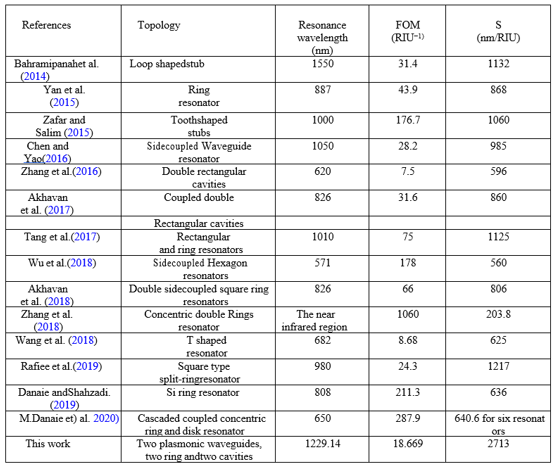
Table 1: Comparison between proposed sensorspecifications and similararticles
Plasmonic sensor is a broad topic and we have highlighted the latest developments in the design of refractive index sensors based on metal-insulated plasmonic waveguides. The structure of the sensor is analyzed numerically and theoretically. Theoretical and numerical results are obtained using the transmission line model and the time difference finite difference method, respectively. Theoretical results are consistent with numerical results. In several plasmonic resonator designs discussed, we have achieved excellent sensitivities of 2713 nm / RIU and 2673 nm / RIU. This proposed device can be used in plasmonic sensing systems in the near-infrared region and improve the performance of sensors that will be designed in the future.
Funding: This research received no external funding.
Conflicts of Interest: The authors declare no conflict of interest.
Availability of data and material: All materials and data of this article are at the disposal of the authors.
Clearly Auctoresonline and particularly Psychology and Mental Health Care Journal is dedicated to improving health care services for individuals and populations. The editorial boards' ability to efficiently recognize and share the global importance of health literacy with a variety of stakeholders. Auctoresonline publishing platform can be used to facilitate of optimal client-based services and should be added to health care professionals' repertoire of evidence-based health care resources.

Journal of Clinical Cardiology and Cardiovascular Intervention The submission and review process was adequate. However I think that the publication total value should have been enlightened in early fases. Thank you for all.

Journal of Women Health Care and Issues By the present mail, I want to say thank to you and tour colleagues for facilitating my published article. Specially thank you for the peer review process, support from the editorial office. I appreciate positively the quality of your journal.
Journal of Clinical Research and Reports I would be very delighted to submit my testimonial regarding the reviewer board and the editorial office. The reviewer board were accurate and helpful regarding any modifications for my manuscript. And the editorial office were very helpful and supportive in contacting and monitoring with any update and offering help. It was my pleasure to contribute with your promising Journal and I am looking forward for more collaboration.

We would like to thank the Journal of Thoracic Disease and Cardiothoracic Surgery because of the services they provided us for our articles. The peer-review process was done in a very excellent time manner, and the opinions of the reviewers helped us to improve our manuscript further. The editorial office had an outstanding correspondence with us and guided us in many ways. During a hard time of the pandemic that is affecting every one of us tremendously, the editorial office helped us make everything easier for publishing scientific work. Hope for a more scientific relationship with your Journal.

The peer-review process which consisted high quality queries on the paper. I did answer six reviewers’ questions and comments before the paper was accepted. The support from the editorial office is excellent.

Journal of Neuroscience and Neurological Surgery. I had the experience of publishing a research article recently. The whole process was simple from submission to publication. The reviewers made specific and valuable recommendations and corrections that improved the quality of my publication. I strongly recommend this Journal.

Dr. Katarzyna Byczkowska My testimonial covering: "The peer review process is quick and effective. The support from the editorial office is very professional and friendly. Quality of the Clinical Cardiology and Cardiovascular Interventions is scientific and publishes ground-breaking research on cardiology that is useful for other professionals in the field.

Thank you most sincerely, with regard to the support you have given in relation to the reviewing process and the processing of my article entitled "Large Cell Neuroendocrine Carcinoma of The Prostate Gland: A Review and Update" for publication in your esteemed Journal, Journal of Cancer Research and Cellular Therapeutics". The editorial team has been very supportive.

Testimony of Journal of Clinical Otorhinolaryngology: work with your Reviews has been a educational and constructive experience. The editorial office were very helpful and supportive. It was a pleasure to contribute to your Journal.

Dr. Bernard Terkimbi Utoo, I am happy to publish my scientific work in Journal of Women Health Care and Issues (JWHCI). The manuscript submission was seamless and peer review process was top notch. I was amazed that 4 reviewers worked on the manuscript which made it a highly technical, standard and excellent quality paper. I appreciate the format and consideration for the APC as well as the speed of publication. It is my pleasure to continue with this scientific relationship with the esteem JWHCI.

This is an acknowledgment for peer reviewers, editorial board of Journal of Clinical Research and Reports. They show a lot of consideration for us as publishers for our research article “Evaluation of the different factors associated with side effects of COVID-19 vaccination on medical students, Mutah university, Al-Karak, Jordan”, in a very professional and easy way. This journal is one of outstanding medical journal.
Dear Hao Jiang, to Journal of Nutrition and Food Processing We greatly appreciate the efficient, professional and rapid processing of our paper by your team. If there is anything else we should do, please do not hesitate to let us know. On behalf of my co-authors, we would like to express our great appreciation to editor and reviewers.

As an author who has recently published in the journal "Brain and Neurological Disorders". I am delighted to provide a testimonial on the peer review process, editorial office support, and the overall quality of the journal. The peer review process at Brain and Neurological Disorders is rigorous and meticulous, ensuring that only high-quality, evidence-based research is published. The reviewers are experts in their fields, and their comments and suggestions were constructive and helped improve the quality of my manuscript. The review process was timely and efficient, with clear communication from the editorial office at each stage. The support from the editorial office was exceptional throughout the entire process. The editorial staff was responsive, professional, and always willing to help. They provided valuable guidance on formatting, structure, and ethical considerations, making the submission process seamless. Moreover, they kept me informed about the status of my manuscript and provided timely updates, which made the process less stressful. The journal Brain and Neurological Disorders is of the highest quality, with a strong focus on publishing cutting-edge research in the field of neurology. The articles published in this journal are well-researched, rigorously peer-reviewed, and written by experts in the field. The journal maintains high standards, ensuring that readers are provided with the most up-to-date and reliable information on brain and neurological disorders. In conclusion, I had a wonderful experience publishing in Brain and Neurological Disorders. The peer review process was thorough, the editorial office provided exceptional support, and the journal's quality is second to none. I would highly recommend this journal to any researcher working in the field of neurology and brain disorders.

Dear Agrippa Hilda, Journal of Neuroscience and Neurological Surgery, Editorial Coordinator, I trust this message finds you well. I want to extend my appreciation for considering my article for publication in your esteemed journal. I am pleased to provide a testimonial regarding the peer review process and the support received from your editorial office. The peer review process for my paper was carried out in a highly professional and thorough manner. The feedback and comments provided by the authors were constructive and very useful in improving the quality of the manuscript. This rigorous assessment process undoubtedly contributes to the high standards maintained by your journal.

International Journal of Clinical Case Reports and Reviews. I strongly recommend to consider submitting your work to this high-quality journal. The support and availability of the Editorial staff is outstanding and the review process was both efficient and rigorous.

Thank you very much for publishing my Research Article titled “Comparing Treatment Outcome Of Allergic Rhinitis Patients After Using Fluticasone Nasal Spray And Nasal Douching" in the Journal of Clinical Otorhinolaryngology. As Medical Professionals we are immensely benefited from study of various informative Articles and Papers published in this high quality Journal. I look forward to enriching my knowledge by regular study of the Journal and contribute my future work in the field of ENT through the Journal for use by the medical fraternity. The support from the Editorial office was excellent and very prompt. I also welcome the comments received from the readers of my Research Article.

Dear Erica Kelsey, Editorial Coordinator of Cancer Research and Cellular Therapeutics Our team is very satisfied with the processing of our paper by your journal. That was fast, efficient, rigorous, but without unnecessary complications. We appreciated the very short time between the submission of the paper and its publication on line on your site.

I am very glad to say that the peer review process is very successful and fast and support from the Editorial Office. Therefore, I would like to continue our scientific relationship for a long time. And I especially thank you for your kindly attention towards my article. Have a good day!

"We recently published an article entitled “Influence of beta-Cyclodextrins upon the Degradation of Carbofuran Derivatives under Alkaline Conditions" in the Journal of “Pesticides and Biofertilizers” to show that the cyclodextrins protect the carbamates increasing their half-life time in the presence of basic conditions This will be very helpful to understand carbofuran behaviour in the analytical, agro-environmental and food areas. We greatly appreciated the interaction with the editor and the editorial team; we were particularly well accompanied during the course of the revision process, since all various steps towards publication were short and without delay".

I would like to express my gratitude towards you process of article review and submission. I found this to be very fair and expedient. Your follow up has been excellent. I have many publications in national and international journal and your process has been one of the best so far. Keep up the great work.

We are grateful for this opportunity to provide a glowing recommendation to the Journal of Psychiatry and Psychotherapy. We found that the editorial team were very supportive, helpful, kept us abreast of timelines and over all very professional in nature. The peer review process was rigorous, efficient and constructive that really enhanced our article submission. The experience with this journal remains one of our best ever and we look forward to providing future submissions in the near future.

I am very pleased to serve as EBM of the journal, I hope many years of my experience in stem cells can help the journal from one way or another. As we know, stem cells hold great potential for regenerative medicine, which are mostly used to promote the repair response of diseased, dysfunctional or injured tissue using stem cells or their derivatives. I think Stem Cell Research and Therapeutics International is a great platform to publish and share the understanding towards the biology and translational or clinical application of stem cells.

I would like to give my testimony in the support I have got by the peer review process and to support the editorial office where they were of asset to support young author like me to be encouraged to publish their work in your respected journal and globalize and share knowledge across the globe. I really give my great gratitude to your journal and the peer review including the editorial office.

I am delighted to publish our manuscript entitled "A Perspective on Cocaine Induced Stroke - Its Mechanisms and Management" in the Journal of Neuroscience and Neurological Surgery. The peer review process, support from the editorial office, and quality of the journal are excellent. The manuscripts published are of high quality and of excellent scientific value. I recommend this journal very much to colleagues.

Dr.Tania Muñoz, My experience as researcher and author of a review article in The Journal Clinical Cardiology and Interventions has been very enriching and stimulating. The editorial team is excellent, performs its work with absolute responsibility and delivery. They are proactive, dynamic and receptive to all proposals. Supporting at all times the vast universe of authors who choose them as an option for publication. The team of review specialists, members of the editorial board, are brilliant professionals, with remarkable performance in medical research and scientific methodology. Together they form a frontline team that consolidates the JCCI as a magnificent option for the publication and review of high-level medical articles and broad collective interest. I am honored to be able to share my review article and open to receive all your comments.

“The peer review process of JPMHC is quick and effective. Authors are benefited by good and professional reviewers with huge experience in the field of psychology and mental health. The support from the editorial office is very professional. People to contact to are friendly and happy to help and assist any query authors might have. Quality of the Journal is scientific and publishes ground-breaking research on mental health that is useful for other professionals in the field”.

Dear editorial department: On behalf of our team, I hereby certify the reliability and superiority of the International Journal of Clinical Case Reports and Reviews in the peer review process, editorial support, and journal quality. Firstly, the peer review process of the International Journal of Clinical Case Reports and Reviews is rigorous, fair, transparent, fast, and of high quality. The editorial department invites experts from relevant fields as anonymous reviewers to review all submitted manuscripts. These experts have rich academic backgrounds and experience, and can accurately evaluate the academic quality, originality, and suitability of manuscripts. The editorial department is committed to ensuring the rigor of the peer review process, while also making every effort to ensure a fast review cycle to meet the needs of authors and the academic community. Secondly, the editorial team of the International Journal of Clinical Case Reports and Reviews is composed of a group of senior scholars and professionals with rich experience and professional knowledge in related fields. The editorial department is committed to assisting authors in improving their manuscripts, ensuring their academic accuracy, clarity, and completeness. Editors actively collaborate with authors, providing useful suggestions and feedback to promote the improvement and development of the manuscript. We believe that the support of the editorial department is one of the key factors in ensuring the quality of the journal. Finally, the International Journal of Clinical Case Reports and Reviews is renowned for its high- quality articles and strict academic standards. The editorial department is committed to publishing innovative and academically valuable research results to promote the development and progress of related fields. The International Journal of Clinical Case Reports and Reviews is reasonably priced and ensures excellent service and quality ratio, allowing authors to obtain high-level academic publishing opportunities in an affordable manner. I hereby solemnly declare that the International Journal of Clinical Case Reports and Reviews has a high level of credibility and superiority in terms of peer review process, editorial support, reasonable fees, and journal quality. Sincerely, Rui Tao.

Clinical Cardiology and Cardiovascular Interventions I testity the covering of the peer review process, support from the editorial office, and quality of the journal.

Clinical Cardiology and Cardiovascular Interventions, we deeply appreciate the interest shown in our work and its publication. It has been a true pleasure to collaborate with you. The peer review process, as well as the support provided by the editorial office, have been exceptional, and the quality of the journal is very high, which was a determining factor in our decision to publish with you.
The peer reviewers process is quick and effective, the supports from editorial office is excellent, the quality of journal is high. I would like to collabroate with Internatioanl journal of Clinical Case Reports and Reviews journal clinically in the future time.

Clinical Cardiology and Cardiovascular Interventions, I would like to express my sincerest gratitude for the trust placed in our team for the publication in your journal. It has been a true pleasure to collaborate with you on this project. I am pleased to inform you that both the peer review process and the attention from the editorial coordination have been excellent. Your team has worked with dedication and professionalism to ensure that your publication meets the highest standards of quality. We are confident that this collaboration will result in mutual success, and we are eager to see the fruits of this shared effort.

Dear Dr. Jessica Magne, Editorial Coordinator 0f Clinical Cardiology and Cardiovascular Interventions, I hope this message finds you well. I want to express my utmost gratitude for your excellent work and for the dedication and speed in the publication process of my article titled "Navigating Innovation: Qualitative Insights on Using Technology for Health Education in Acute Coronary Syndrome Patients." I am very satisfied with the peer review process, the support from the editorial office, and the quality of the journal. I hope we can maintain our scientific relationship in the long term.
Dear Monica Gissare, - Editorial Coordinator of Nutrition and Food Processing. ¨My testimony with you is truly professional, with a positive response regarding the follow-up of the article and its review, you took into account my qualities and the importance of the topic¨.

Dear Dr. Jessica Magne, Editorial Coordinator 0f Clinical Cardiology and Cardiovascular Interventions, The review process for the article “The Handling of Anti-aggregants and Anticoagulants in the Oncologic Heart Patient Submitted to Surgery” was extremely rigorous and detailed. From the initial submission to the final acceptance, the editorial team at the “Journal of Clinical Cardiology and Cardiovascular Interventions” demonstrated a high level of professionalism and dedication. The reviewers provided constructive and detailed feedback, which was essential for improving the quality of our work. Communication was always clear and efficient, ensuring that all our questions were promptly addressed. The quality of the “Journal of Clinical Cardiology and Cardiovascular Interventions” is undeniable. It is a peer-reviewed, open-access publication dedicated exclusively to disseminating high-quality research in the field of clinical cardiology and cardiovascular interventions. The journal's impact factor is currently under evaluation, and it is indexed in reputable databases, which further reinforces its credibility and relevance in the scientific field. I highly recommend this journal to researchers looking for a reputable platform to publish their studies.

Dear Editorial Coordinator of the Journal of Nutrition and Food Processing! "I would like to thank the Journal of Nutrition and Food Processing for including and publishing my article. The peer review process was very quick, movement and precise. The Editorial Board has done an extremely conscientious job with much help, valuable comments and advices. I find the journal very valuable from a professional point of view, thank you very much for allowing me to be part of it and I would like to participate in the future!”

Dealing with The Journal of Neurology and Neurological Surgery was very smooth and comprehensive. The office staff took time to address my needs and the response from editors and the office was prompt and fair. I certainly hope to publish with this journal again.Their professionalism is apparent and more than satisfactory. Susan Weiner

My Testimonial Covering as fellowing: Lin-Show Chin. The peer reviewers process is quick and effective, the supports from editorial office is excellent, the quality of journal is high. I would like to collabroate with Internatioanl journal of Clinical Case Reports and Reviews.

My experience publishing in Psychology and Mental Health Care was exceptional. The peer review process was rigorous and constructive, with reviewers providing valuable insights that helped enhance the quality of our work. The editorial team was highly supportive and responsive, making the submission process smooth and efficient. The journal's commitment to high standards and academic rigor makes it a respected platform for quality research. I am grateful for the opportunity to publish in such a reputable journal.
My experience publishing in International Journal of Clinical Case Reports and Reviews was exceptional. I Come forth to Provide a Testimonial Covering the Peer Review Process and the editorial office for the Professional and Impartial Evaluation of the Manuscript.

I would like to offer my testimony in the support. I have received through the peer review process and support the editorial office where they are to support young authors like me, encourage them to publish their work in your esteemed journals, and globalize and share knowledge globally. I really appreciate your journal, peer review, and editorial office.
Dear Agrippa Hilda- Editorial Coordinator of Journal of Neuroscience and Neurological Surgery, "The peer review process was very quick and of high quality, which can also be seen in the articles in the journal. The collaboration with the editorial office was very good."

I would like to express my sincere gratitude for the support and efficiency provided by the editorial office throughout the publication process of my article, “Delayed Vulvar Metastases from Rectal Carcinoma: A Case Report.” I greatly appreciate the assistance and guidance I received from your team, which made the entire process smooth and efficient. The peer review process was thorough and constructive, contributing to the overall quality of the final article. I am very grateful for the high level of professionalism and commitment shown by the editorial staff, and I look forward to maintaining a long-term collaboration with the International Journal of Clinical Case Reports and Reviews.
To Dear Erin Aust, I would like to express my heartfelt appreciation for the opportunity to have my work published in this esteemed journal. The entire publication process was smooth and well-organized, and I am extremely satisfied with the final result. The Editorial Team demonstrated the utmost professionalism, providing prompt and insightful feedback throughout the review process. Their clear communication and constructive suggestions were invaluable in enhancing my manuscript, and their meticulous attention to detail and dedication to quality are truly commendable. Additionally, the support from the Editorial Office was exceptional. From the initial submission to the final publication, I was guided through every step of the process with great care and professionalism. The team's responsiveness and assistance made the entire experience both easy and stress-free. I am also deeply impressed by the quality and reputation of the journal. It is an honor to have my research featured in such a respected publication, and I am confident that it will make a meaningful contribution to the field.

"I am grateful for the opportunity of contributing to [International Journal of Clinical Case Reports and Reviews] and for the rigorous review process that enhances the quality of research published in your esteemed journal. I sincerely appreciate the time and effort of your team who have dedicatedly helped me in improvising changes and modifying my manuscript. The insightful comments and constructive feedback provided have been invaluable in refining and strengthening my work".

I thank the ‘Journal of Clinical Research and Reports’ for accepting this article for publication. This is a rigorously peer reviewed journal which is on all major global scientific data bases. I note the review process was prompt, thorough and professionally critical. It gave us an insight into a number of important scientific/statistical issues. The review prompted us to review the relevant literature again and look at the limitations of the study. The peer reviewers were open, clear in the instructions and the editorial team was very prompt in their communication. This journal certainly publishes quality research articles. I would recommend the journal for any future publications.

Dear Jessica Magne, with gratitude for the joint work. Fast process of receiving and processing the submitted scientific materials in “Clinical Cardiology and Cardiovascular Interventions”. High level of competence of the editors with clear and correct recommendations and ideas for enriching the article.

We found the peer review process quick and positive in its input. The support from the editorial officer has been very agile, always with the intention of improving the article and taking into account our subsequent corrections.

My article, titled 'No Way Out of the Smartphone Epidemic Without Considering the Insights of Brain Research,' has been republished in the International Journal of Clinical Case Reports and Reviews. The review process was seamless and professional, with the editors being both friendly and supportive. I am deeply grateful for their efforts.
To Dear Erin Aust – Editorial Coordinator of Journal of General Medicine and Clinical Practice! I declare that I am absolutely satisfied with your work carried out with great competence in following the manuscript during the various stages from its receipt, during the revision process to the final acceptance for publication. Thank Prof. Elvira Farina

Dear Jessica, and the super professional team of the ‘Clinical Cardiology and Cardiovascular Interventions’ I am sincerely grateful to the coordinated work of the journal team for the no problem with the submission of my manuscript: “Cardiometabolic Disorders in A Pregnant Woman with Severe Preeclampsia on the Background of Morbid Obesity (Case Report).” The review process by 5 experts was fast, and the comments were professional, which made it more specific and academic, and the process of publication and presentation of the article was excellent. I recommend that my colleagues publish articles in this journal, and I am interested in further scientific cooperation. Sincerely and best wishes, Dr. Oleg Golyanovskiy.

Dear Ashley Rosa, Editorial Coordinator of the journal - Psychology and Mental Health Care. " The process of obtaining publication of my article in the Psychology and Mental Health Journal was positive in all areas. The peer review process resulted in a number of valuable comments, the editorial process was collaborative and timely, and the quality of this journal has been quickly noticed, resulting in alternative journals contacting me to publish with them." Warm regards, Susan Anne Smith, PhD. Australian Breastfeeding Association.

Dear Jessica Magne, Editorial Coordinator, Clinical Cardiology and Cardiovascular Interventions, Auctores Publishing LLC. I appreciate the journal (JCCI) editorial office support, the entire team leads were always ready to help, not only on technical front but also on thorough process. Also, I should thank dear reviewers’ attention to detail and creative approach to teach me and bring new insights by their comments. Surely, more discussions and introduction of other hemodynamic devices would provide better prevention and management of shock states. Your efforts and dedication in presenting educational materials in this journal are commendable. Best wishes from, Farahnaz Fallahian.
Dear Maria Emerson, Editorial Coordinator, International Journal of Clinical Case Reports and Reviews, Auctores Publishing LLC. I am delighted to have published our manuscript, "Acute Colonic Pseudo-Obstruction (ACPO): A rare but serious complication following caesarean section." I want to thank the editorial team, especially Maria Emerson, for their prompt review of the manuscript, quick responses to queries, and overall support. Yours sincerely Dr. Victor Olagundoye.

Dear Ashley Rosa, Editorial Coordinator, International Journal of Clinical Case Reports and Reviews. Many thanks for publishing this manuscript after I lost confidence the editors were most helpful, more than other journals Best wishes from, Susan Anne Smith, PhD. Australian Breastfeeding Association.

Dear Agrippa Hilda, Editorial Coordinator, Journal of Neuroscience and Neurological Surgery. The entire process including article submission, review, revision, and publication was extremely easy. The journal editor was prompt and helpful, and the reviewers contributed to the quality of the paper. Thank you so much! Eric Nussbaum, MD
Dr Hala Al Shaikh This is to acknowledge that the peer review process for the article ’ A Novel Gnrh1 Gene Mutation in Four Omani Male Siblings, Presentation and Management ’ sent to the International Journal of Clinical Case Reports and Reviews was quick and smooth. The editorial office was prompt with easy communication.

Dear Erin Aust, Editorial Coordinator, Journal of General Medicine and Clinical Practice. We are pleased to share our experience with the “Journal of General Medicine and Clinical Practice”, following the successful publication of our article. The peer review process was thorough and constructive, helping to improve the clarity and quality of the manuscript. We are especially thankful to Ms. Erin Aust, the Editorial Coordinator, for her prompt communication and continuous support throughout the process. Her professionalism ensured a smooth and efficient publication experience. The journal upholds high editorial standards, and we highly recommend it to fellow researchers seeking a credible platform for their work. Best wishes By, Dr. Rakhi Mishra.

Dear Jessica Magne, Editorial Coordinator, Clinical Cardiology and Cardiovascular Interventions, Auctores Publishing LLC. The peer review process of the journal of Clinical Cardiology and Cardiovascular Interventions was excellent and fast, as was the support of the editorial office and the quality of the journal. Kind regards Walter F. Riesen Prof. Dr. Dr. h.c. Walter F. Riesen.

Dear Ashley Rosa, Editorial Coordinator, International Journal of Clinical Case Reports and Reviews, Auctores Publishing LLC. Thank you for publishing our article, Exploring Clozapine's Efficacy in Managing Aggression: A Multiple Single-Case Study in Forensic Psychiatry in the international journal of clinical case reports and reviews. We found the peer review process very professional and efficient. The comments were constructive, and the whole process was efficient. On behalf of the co-authors, I would like to thank you for publishing this article. With regards, Dr. Jelle R. Lettinga.

Dear Clarissa Eric, Editorial Coordinator, Journal of Clinical Case Reports and Studies, I would like to express my deep admiration for the exceptional professionalism demonstrated by your journal. I am thoroughly impressed by the speed of the editorial process, the substantive and insightful reviews, and the meticulous preparation of the manuscript for publication. Additionally, I greatly appreciate the courteous and immediate responses from your editorial office to all my inquiries. Best Regards, Dariusz Ziora

Dear Chrystine Mejia, Editorial Coordinator, Journal of Neurodegeneration and Neurorehabilitation, Auctores Publishing LLC, We would like to thank the editorial team for the smooth and high-quality communication leading up to the publication of our article in the Journal of Neurodegeneration and Neurorehabilitation. The reviewers have extensive knowledge in the field, and their relevant questions helped to add value to our publication. Kind regards, Dr. Ravi Shrivastava.

Dear Clarissa Eric, Editorial Coordinator, Journal of Clinical Case Reports and Studies, Auctores Publishing LLC, USA Office: +1-(302)-520-2644. I would like to express my sincere appreciation for the efficient and professional handling of my case report by the ‘Journal of Clinical Case Reports and Studies’. The peer review process was not only fast but also highly constructive—the reviewers’ comments were clear, relevant, and greatly helped me improve the quality and clarity of my manuscript. I also received excellent support from the editorial office throughout the process. Communication was smooth and timely, and I felt well guided at every stage, from submission to publication. The overall quality and rigor of the journal are truly commendable. I am pleased to have published my work with Journal of Clinical Case Reports and Studies, and I look forward to future opportunities for collaboration. Sincerely, Aline Tollet, UCLouvain.

Dear Ms. Mayra Duenas, Editorial Coordinator, International Journal of Clinical Case Reports and Reviews. “The International Journal of Clinical Case Reports and Reviews represented the “ideal house” to share with the research community a first experience with the use of the Simeox device for speech rehabilitation. High scientific reputation and attractive website communication were first determinants for the selection of this Journal, and the following submission process exceeded expectations: fast but highly professional peer review, great support by the editorial office, elegant graphic layout. Exactly what a dynamic research team - also composed by allied professionals - needs!" From, Chiara Beccaluva, PT - Italy.

Dear Maria Emerson, Editorial Coordinator, we have deeply appreciated the professionalism demonstrated by the International Journal of Clinical Case Reports and Reviews. The reviewers have extensive knowledge of our field and have been very efficient and fast in supporting the process. I am really looking forward to further collaboration. Thanks. Best regards, Dr. Claudio Ligresti